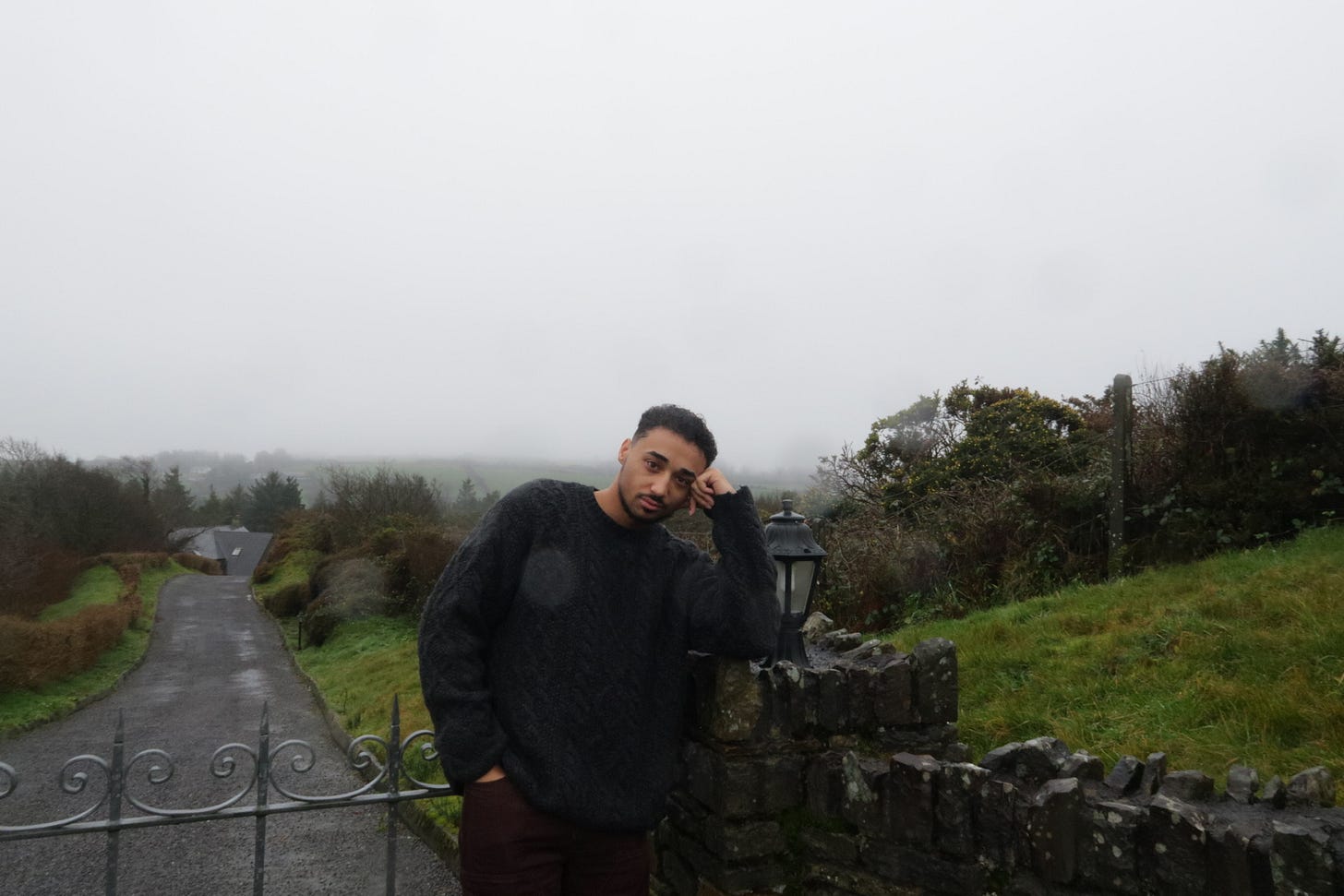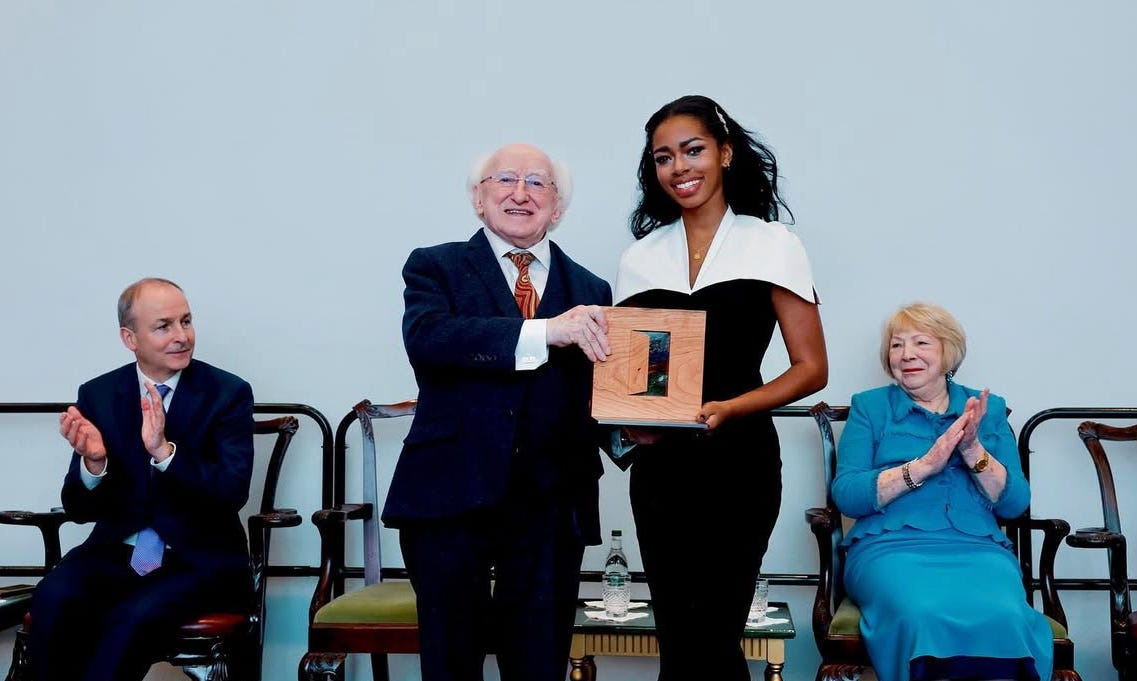Morgan Bullock's Riverdance and Decolonizing Culture
How Irishness Can Dance Beyond Whiteness
Shane Michael Gregory Moran—that’s my name—a distinctly Irish name for a brown-skinned kid from Virginia. And it’s a name that, like me, exists in a space between cultures.
When I studied abroad in Galway, locals encouraged me to pronounce it "MOHR-an"—not the Anglicized "mor-AN." I now introduce myself that way in creative spaces, especially in my poetry, where it feels closer to the tradition that first sparked my love of literature.
Growing up as a black and Irish American kid in Chesterfield County, Virginia—a still-expanding suburb just outside Richmond—was challenging. My schools were filled with fair-skinned Fitzgeralds, Kennedys, O’Donnells and McDonalds who, despite their surnames, seemed so disconnected from their Irish heritage. For me, Irishness was a core part of my identity, yet I often felt like an outsider. Even today, I worry that people won’t see me as Irish because of my black-American heritage.
But if being Irish is about preserving stories, culture, and a history of resilience, then I am Irish in every way that matters. My grandmother, the daughter of Irish immigrants, kept our roots alive through old songs, stories, and history lessons. My grandfather, though estranged during his life, was also of Irish descent. I grew up singing traditional ballads and fight songs, watching documentaries and films about the Irish War of Independence and The Troubles, and listening to my grandmother recount heartbreaking and romantic stories of An Gorta Mór and the lives our family had left behind.
I watched her cry about her parents' love for her—how Kathleen Flynn and Michael Poust (read my article on the story of this not-so-Irish surname) left the old country not knowing what lay ahead, sacrificing everything for her and her five siblings—before any of them were even born. These stories were my inheritance, woven into the fabric of my childhood.
It’s for this reason that I was so thrilled to learn Riverdance was coming to the Kennedy Center—with none other than Morgan Bullock, the viral black-American Irish dancer from my hometown, in the ensemble. I first saw her on YouTube during the COVID pandemic, tapping in hard shoes to Savage by Meg Thee Stallion. It was electrifying. That summer, Irish dance had somehow found its way into the heart of “Hot Girl Summer”—and it felt like something new was being born.
You see, I was born in the Bronx—the birthplace of Hip-Hop—to an African-American mother and an Irish-American father, both deep lovers of rap and hip-hop music. As I shared earlier, my father’s mother was also deeply invested in Irish tradition: music, poetry, storytelling. Watching Morgan blend Meg with Irish dance didn’t just excite me—it struck a personal chord, a heartstring. It was as if my identity, which had always felt fractured or far away from itself, was suddenly visible and whole.
So when I sat in the orchestra section and watched her glide across the stage—graceful, beaming, catching the arms of a tall partner mid-flight—she looked so Irish, so true to the form, and in a way so much like me. In that moment, watching a young woman from Richmond with skin more like mine command that stage, I realized something: the greatness of a culture lies in its ability to transcend division and expand who gets to call it home.
That said, I wasn’t particularly moved by the West Side Story-esque moment in the “Trading Taps” scene of Riverdance, where two male dancers of color enter the stage. While it was exciting to see these dancers representing “Brooklyn,” “Hip-Hop,” and “Jazz,” and their talent was undeniable, the scene’s framing gave me pause.
The tension between the white/Irish dancers—rooted in traditional style—and the black and POC/non-Irish dancers—bringing in more fluid, contemporary styles—seemed intended to celebrate the fusion of traditions. And to some extent, it did. It highlighted the energy and innovation that new participants bring to Irish dance.
Yet, by drawing such a stark visual and stylistic contrast along racial lines, it begs the question: Does highlighting cultural fusion in this way unintentionally reinforce racist boundaries rather than dismantle them? While certainly unintentional, the effect still felt racialistly charged in a way that, for me, distracted from the spirit of inclusion it may have aimed to evoke.
Similarly, a comparable approach is taken in the “Firedance” scene, where a flamenco dance is reinterpreted through Irish tap. While I wouldn’t characterize either of these scenes as explicitly racist or prejudiced, it’s worth noting that they both rely on the continued association of culture, behavior, and artistic expression with physical appearance—particularly in terms of skin color or perceived ethnicity.
I point this out to highlight the brilliance of Morgan Bullock’s understated presence in the ensemble. In Riverdance, Morgan is simply Irish—nothing more, nothing less. Her presence on stage is unremarkable in the best possible way: unlimited, unothered, and complete. That, to me, was the most powerful message of Riverdance 30: the effortless inclusion of a black-American girl from Richmond, with no explanation or justification needed. She is pure talent—and an equal participant in preserving Irish culture and dance.
I am forever grateful to Morgan, her family, and all who supported her in the face of some racist backlash she endured when her videos first started going viral. In honoring Irish culture for what it truly is—Irish, not white—she reminds us of the truth. Such a culture belongs to those who love it, carry it, and move it forward. Indeed, the Irish people have a long history of oppression caused by the very systems that gave rise to anti-black supremacy, so any effort to make Irish culture a space for decolonization and anti-racism is one I wholeheartedly support and thoroughly enjoy.
In a moment when Diversity, Equity, and Inclusion are being demonized by the President of the United States, I find myself increasingly drawn to art and organizations that imagine a better world—one that is anti-racist, inclusive, and rooted in love, diverse culture, and unity. If culture is to be decolonized in a time like this, then let it be done by those who understand what it means to fight for belonging. Let us reject the impulse to guard tradition out of fear and ignorance.
And although the history between Irish-American and black-American communities is long and complex—marked by both tension and solidarity—in those moments with Morgan on stage, our stories moved in rhythm together.
Thank you, Morgan Bullock, for making me feel seen the week before St. Patrick’s Day in our nation’s capital in a time of great tumult, for embracing Irish culture, and preserving this important and beautiful Irish tradition. Never stop dancing. Morgan go bragh.






